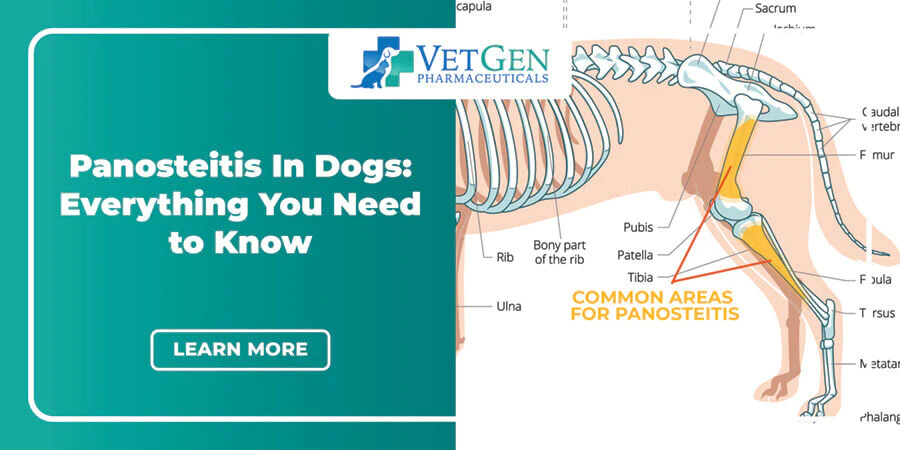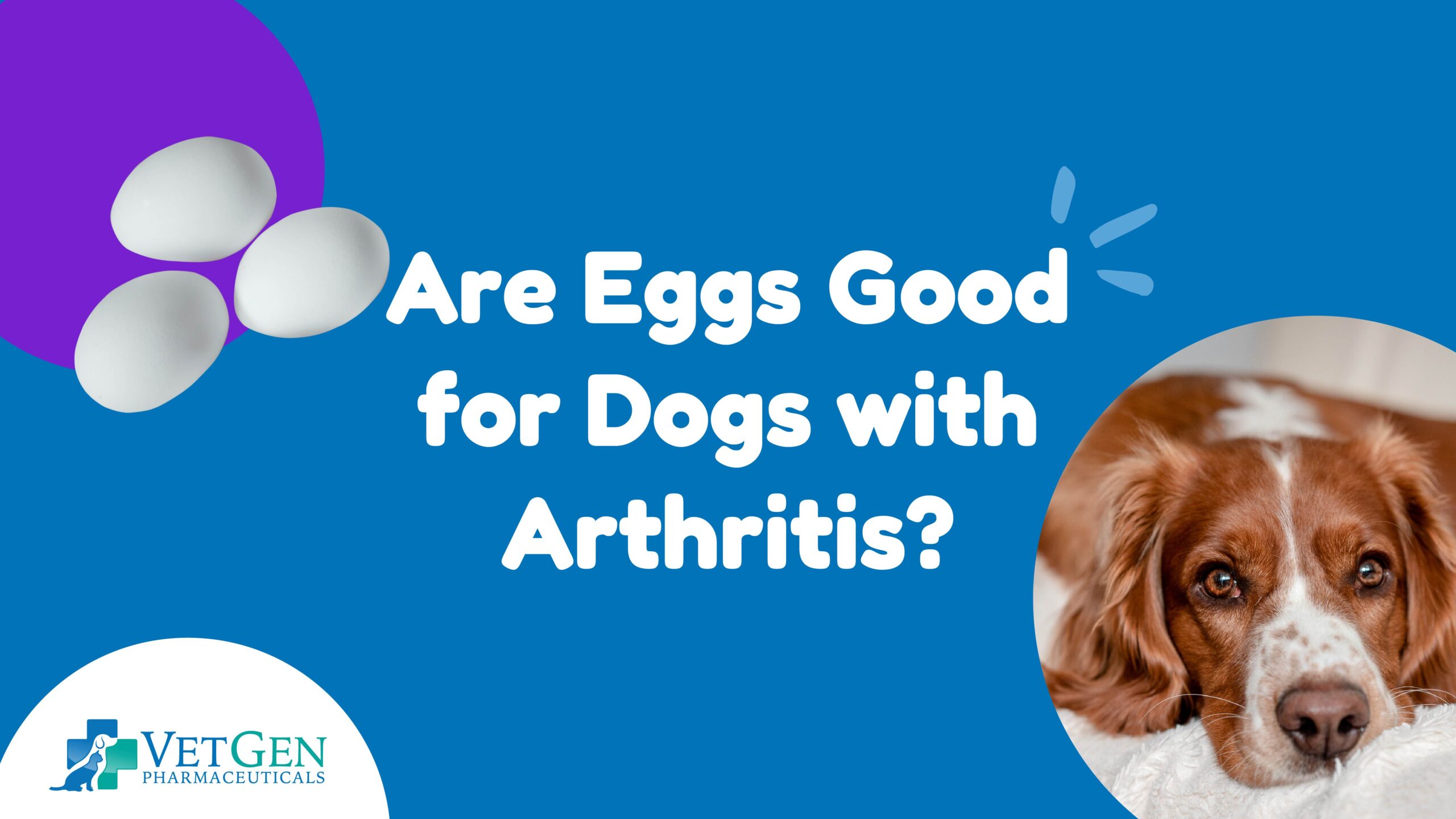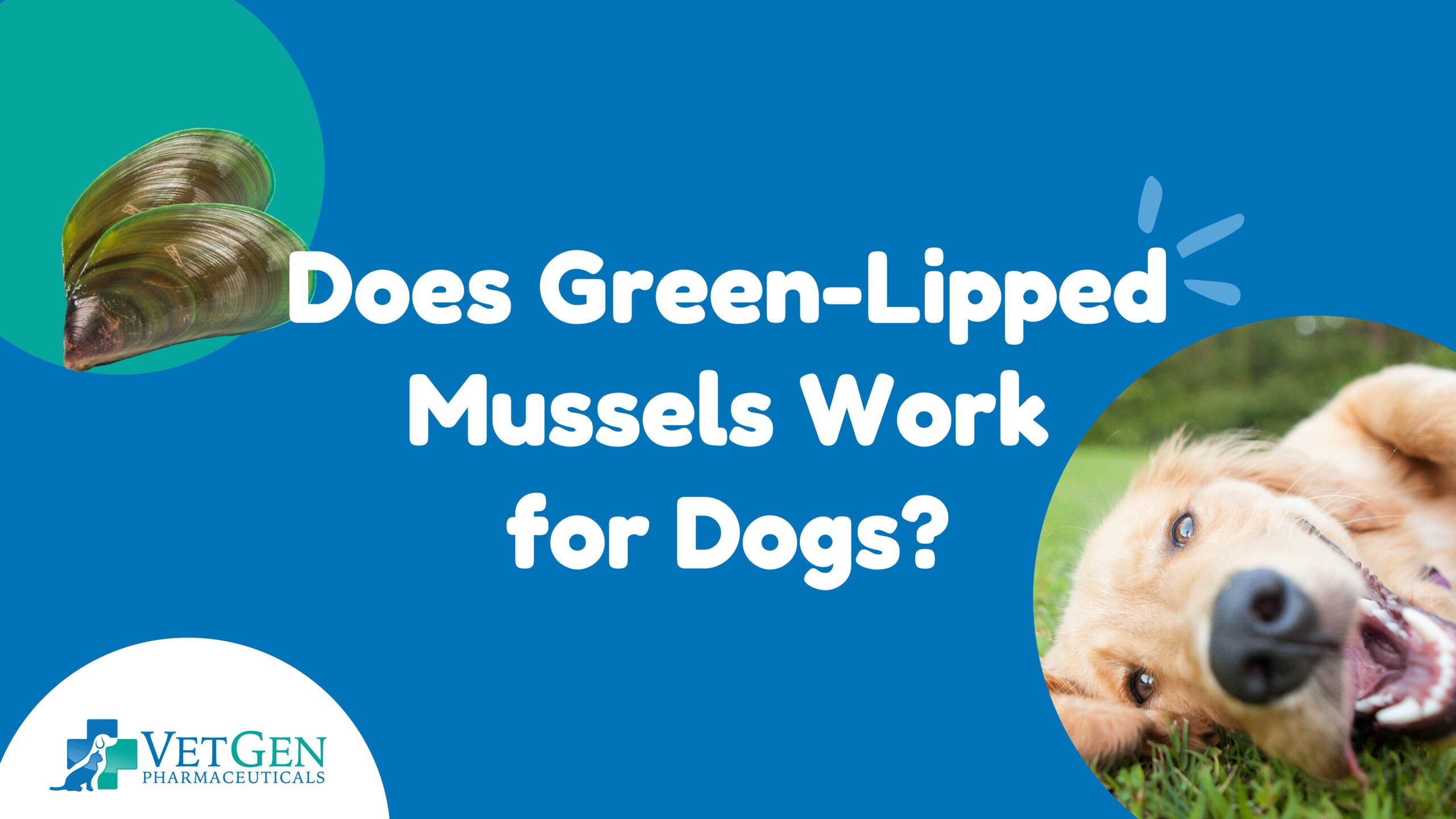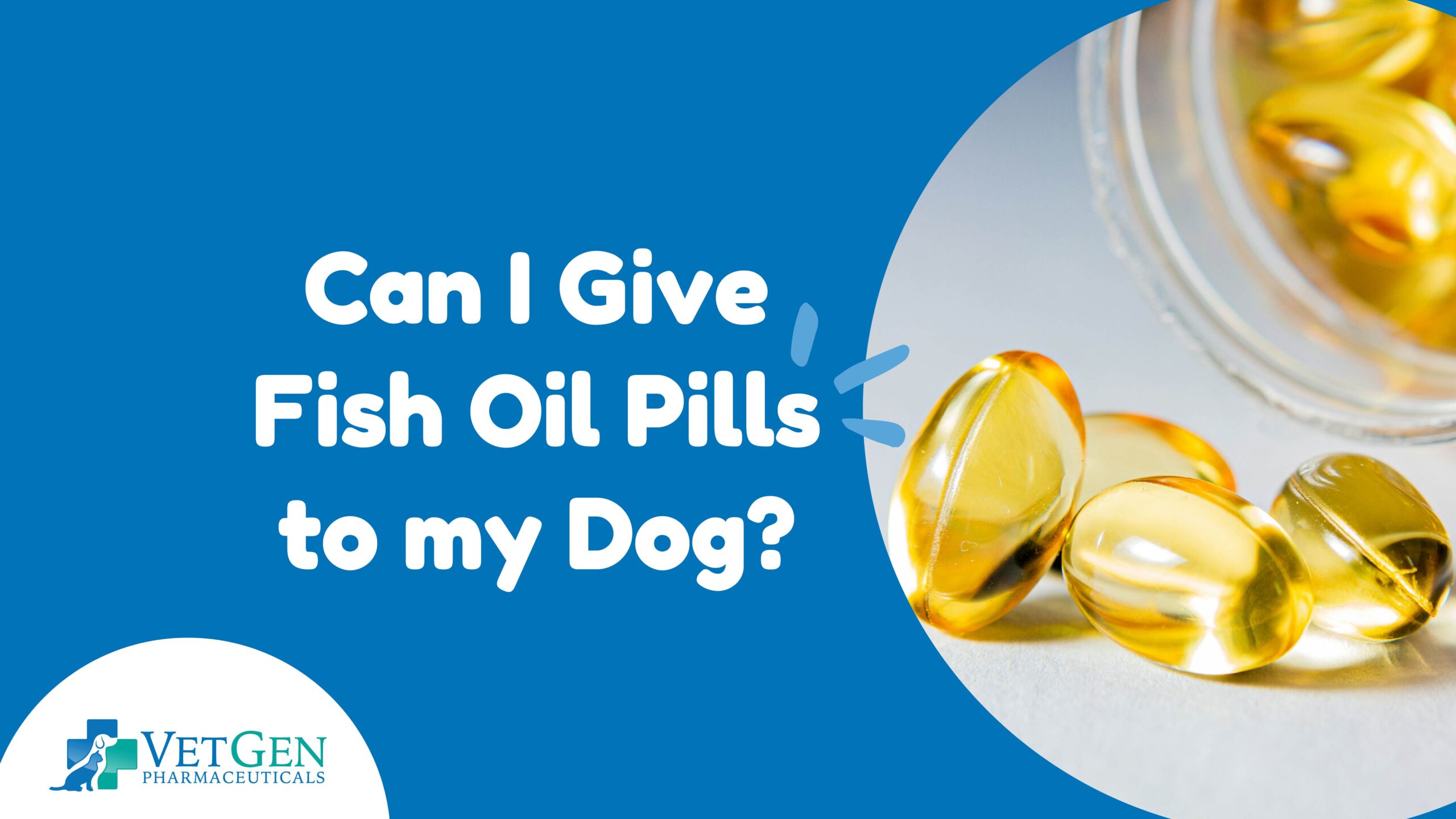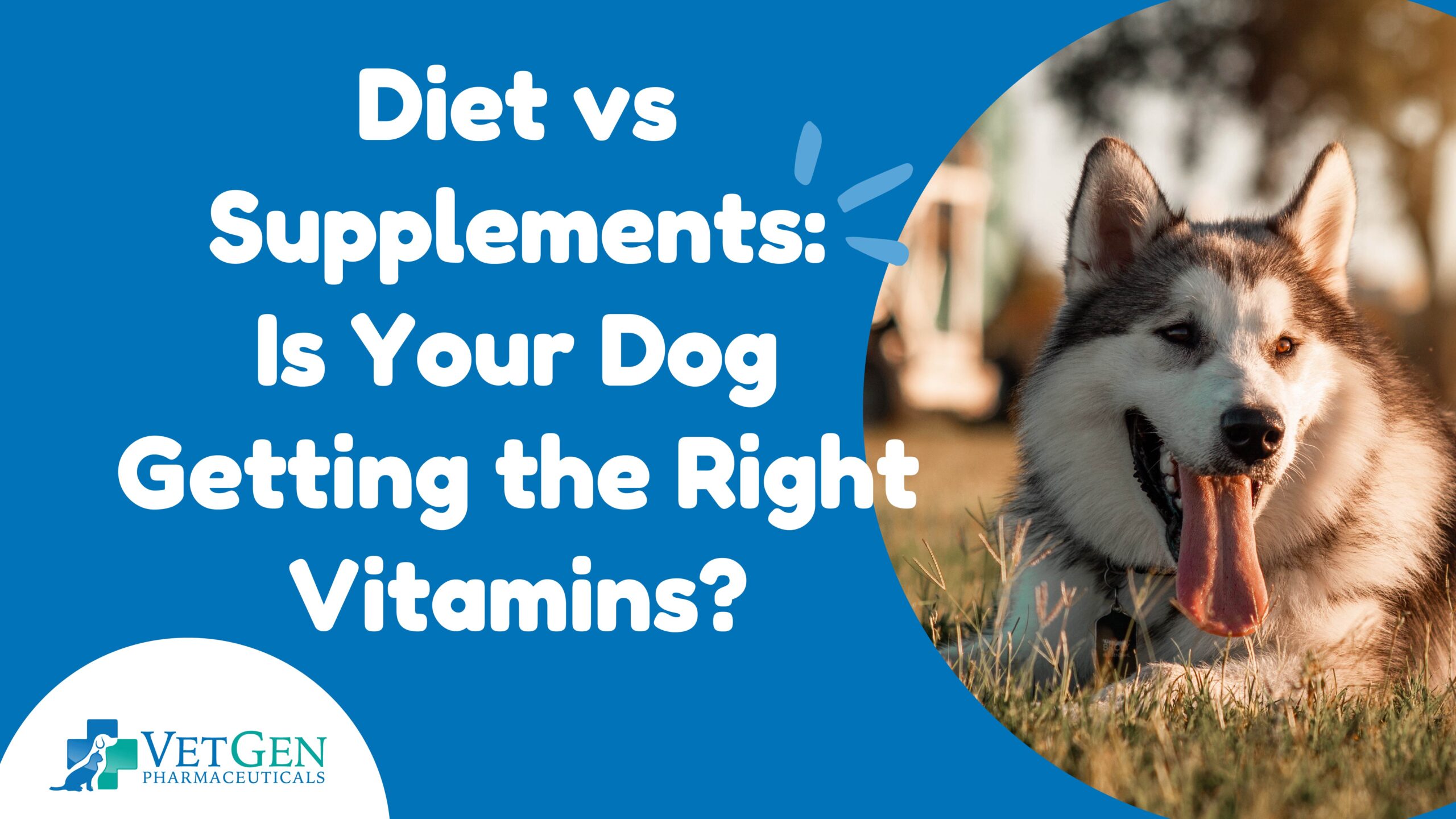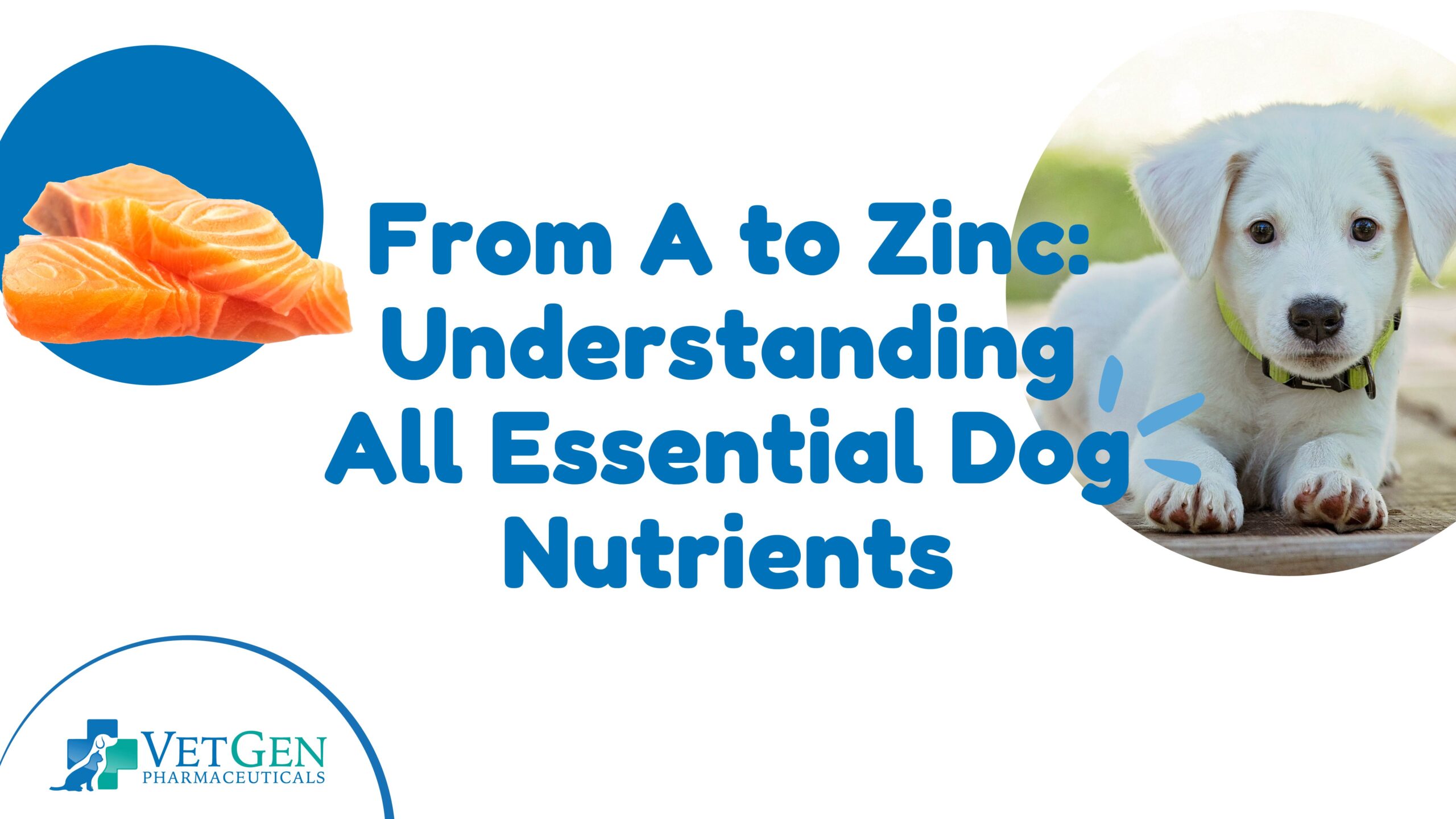Table of Contents
Introduction
If you’re a dog owner, then you’ve most likely heard about growing pains in dogs. It is a common phenomenon, after all, pups must grow to adulthood.
Medical professionals refer to this condition as Panosteitis, and for many dogs, it can be extremely uncomfortable.
It’s not all gloom and doom, because Panosteitis is manageable. Not only is there treatment available, but there are also joint supplements for dogs that you could get to help your pup along.
Understanding Panosteitis in Dogs
Panosteitis is a condition in which the long leg bones of growing dogs become inflamed in the outer shaft section.
The phenomenon commonly affects dogs between the ages of 5 and 18 months. It is associated with the process of growth, in which the long bones extend and develop the pup’s sturdy legs.
That’s why you will most likely hear veterinarians referring to it as growing pains.
Panosteitis is characterized by pain in the leg bones and joints which become regularly inflamed as a dog continues to grow. Additionally, affected dogs may experience weight loss, lethargy and fever.
The pain comes in recurring cycles and often shifts from leg to leg. At the height of the inflammation, the leg will be painful to the touch.
What Causes Panosteitis?
Understanding how dogs get Panosteitis requires a look into how their bones develop.
As early as 3 to 5 months of age, a dog’s bones begin to experience some internal pressure. This pressure triggers the response of pain receptors, and the whole bone surface becomes inflamed and painful. During this time, you may witness your pup’s discomfort, displayed as sluggishness and limping.
A definitive cause of Panosteitis has not been found, however, research points to certain factors that make a dog more susceptible to developing the condition.
Genetics: German Shepherds are by far the dog breed most commonly diagnosed with panosteitis. Such a high susceptibility points to a genetic connection that may contribute to how prevalent the condition is in this specific dog breed.
Poor nutrition: It goes without saying that a good diet leads to healthy growth for all animals, including dogs.
Scientists have found that the symptoms of panosteitis are felt more often in dogs with poor nutrition.
A well-balanced diet will help to ease your pup’s panosteitis, and joint supplements for dogs can make the experience even less painful for them.
What Dogs Are Affected by Panosteitis?
It is important to note that not all dogs develop panosteitis. The condition is exclusive to growing dogs, which is why they are referred to as growing pains.
Scientists have also found that male dogs tend to be more afflicted than female dogs, although this does not mean that female breeds are immune.
Not all dog breeds suffer from panosteitis either. Although technically, it can affect any dog, the condition is most common in larger dog breeds. This includes Great Danes, German shepherds, Labrador retrievers, Basset hounds and more. Owners with this breed should pay closer attention to their growing pups to spot the problem and find relief for their pets when it happens.
The great news about panosteitis is that it does not last forever.
Eventually, when they are near two years of age, the problem resolves itself spontaneously.
How to Manage Panosteitis?
If your pup is suddenly limping or expressing discomfort to the touch, then you should visit a veterinarian as soon as possible. It would be prudent to rule out an injury before concluding that it is, indeed, panosteitis.
Diagnosing panosteitis involves feeling the bone for any pain when touched. A more conclusive diagnosis involves radiography which shows any changes in bone density. Panosteitis presents itself in bones that develop more density compared to others, and this indicates that the pup is growing.
Waiting for Self-Resolution
For the most part, your pup will have to wait for the panosteitis to stop on its own. It is an indicator of the growth process and will happen to some dogs anyway.
The inflammation and pain will come and go every so often until they approach their second year. At that point, it all just stops spontaneously.
It is understandable, however, that as a pet owner, it is not easy watching your pup suffer through the discomfort.
Here are a few more things that can be done to make the condition far more manageable.
Pain Medication
Depending on the recommendation of your vet, you could get your pup some painkillers to help manage the pain. These analgesics will spare them from the discomfort of the pain for a time. They will help to relieve your dog throughout their time experiencing the necessary bone growth related to panosteitis.
Anti-Inflammatory Medication
The pain that a dog experiences in panosteitis is a direct result of the inflammation that occurs when the bones experience the pressure of growth.
With this in mind, a vet could prescribe anti-inflammatory drugs to reduce the symptoms. These may work to prevent the strong pain that accompanies the condition, granting your pup that much-needed relief.
Diet and Supplements
Taking great care of your pup’s diet will ensure that they grow up healthy and strong. If they’re struggling with panosteitis, then it helps to ease their symptoms.
This is especially effective if you include supplements in their diet. With such a healthy inclusion in their food, your pup is likely to recover from panosteitis much sooner!
Conclusion
Panosteitis is a difficult condition for a dog to go through. However, as a pet owner, you can rest assured that they will survive it.
You can make the process less uncomfortable for them though. All it takes is the right medical care if needed, and the right diet, accompanied by good joint supplements for dogs.
Your little one will be fine, especially with your help.


